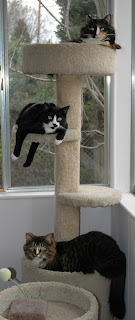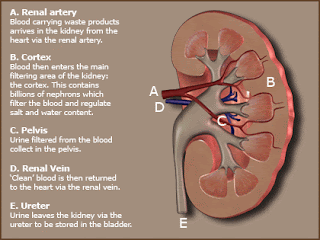 Chronic kidney disease is an all too common finding in middle-aged to senior kitties. Cats are considered seniors once they reach the age of 9 years old. Though we are not yet able to prevent kidney disease, the earlier we detect it, the better chance we have of managing it, which is why we strongly suggest that all senior cats get blood work as part of their regular wellness exams. Clinical signs to look for are decreased appetite, vomiting, weight loss and increased thirst and urination.
Chronic kidney disease is an all too common finding in middle-aged to senior kitties. Cats are considered seniors once they reach the age of 9 years old. Though we are not yet able to prevent kidney disease, the earlier we detect it, the better chance we have of managing it, which is why we strongly suggest that all senior cats get blood work as part of their regular wellness exams. Clinical signs to look for are decreased appetite, vomiting, weight loss and increased thirst and urination.We do not see an increase in kidney values, the BUN and creatinine, until 2/3 of the kidney tissue is damaged. Once the kidneys have reached this state, our goal is to support the kidney function that remains. This is accomplished with a kidney-friendly prescription diet. These diets are designed to contain small amounts of very high-quality protein, thus decreasing the work the kidneys have to do. We suggest feeding canned food, if you don’t do so already, as the increased moisture will also help flush out the kidneys. Starting your cat on an Omega-3 fatty acid such as fish oil has also been shown to help protect the kidneys. I also recommend that owners begin giving the antacid famotidine (Pepcid AC); this helps settle the stomach as increased kidney values can cause nausea. You may also be asked to give your cat fluids under the skin, which help keep kitty hydrated and feeling good.

Kidney disease is progressive so, despite our best efforts, it will eventually get worse. That said, the majority of cats respond very well to treatment and live with their disease for many years. The best strategy is to catch it early with routine blood work. This will allow us to do everything possible to give you and your kitty a long, happy life together.








No comments:
Post a Comment